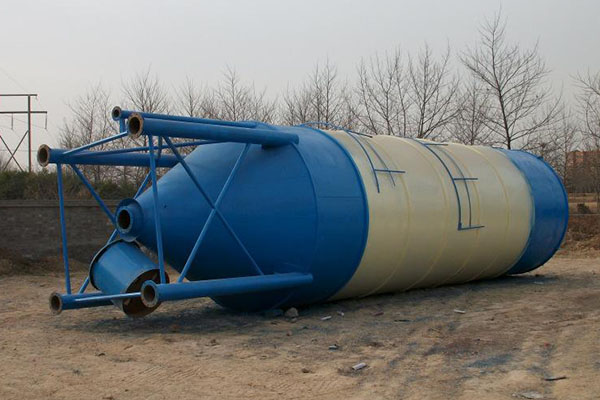Concrete batching plant cement silo
Writer:Admin Time:19/12/24A concrete batching plant cement silo consists of as many as 11 components. Here we would introduce five of them: the dust collector at the top, the pressure valve, the dust remover, the flow aiding air cushion and the manual butterfly valve.
The dust collector of a concrete batching plant functions to prevent dust in the compressed air from going out into the open air while cement vehicles feed cement into the silo. The collector vibrator must be started to remove collected dust off the filter element every time before and after powder feeding into the silo, so that the air will be able to flow smoothly in and out of the silo.

The pressure valve functions to protect the silo from getting deformed or even damaged under excessive pressure. While the cement is being fed into the silo, the dust collector gets clogged, which leads to rise of air pressure in the silo. To protect the silo from rising air pressure, the safety valve opens automatically to allow excessive air pressure out of the silo. Most mobile concrete batching plant manufacturers do not install the valve unless asked, for regularly it’s replaced by a crooked part.
The dust remover of the top dust collector is a steel pipe used for conveying materials to the tank body. It is fixed on the tank body: the pipe bend should have wear-resistant measures; the soot outlet hose of the bulk cement conveyor has a quick joint, which can be easily and quickly connected with the soot blower pipe of the cement silo.
The air cushion pressure safety resistance level indicator lamp is often installed in the concrete batching plant silo to detect the storage of powder in the powder tank. There is a level indicator. As shown in the figure above, the level gauge adopts a stop-rotating level indicator with a high and low level indicator. High-level alarm indicates that the material in the powder tank is filling up quickly and should stop conveying material to the tank; low-level alarm indicates that the material in the powder tank is running out, and should be prepared to re-convey the material to the tank.
The upper part of the manual butterfly valve is connected with the outlet of the warehouse body, and the lower part is connected with the screw conveyor through the transition pipe. Under normal working conditions, the manual butterfly valve "opens to let the powder in the tank fall into the screw conveyor. When the screw conveyor breaks down, it is necessary to shut down manually before dismantling the screw conveyor to prevent powder from being discharged from the tank.

